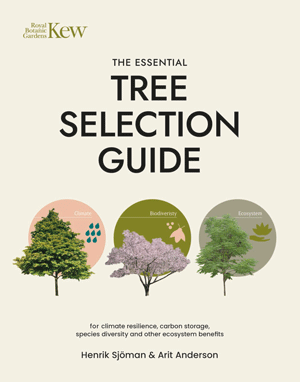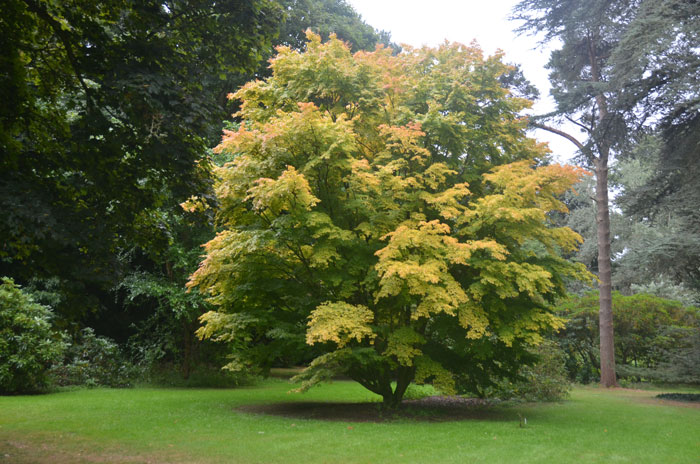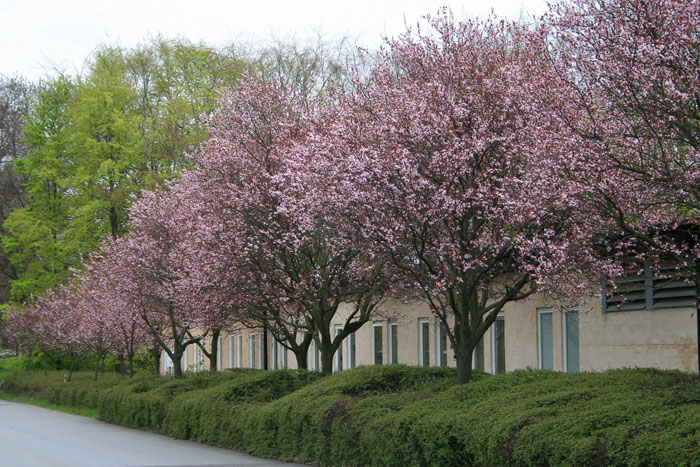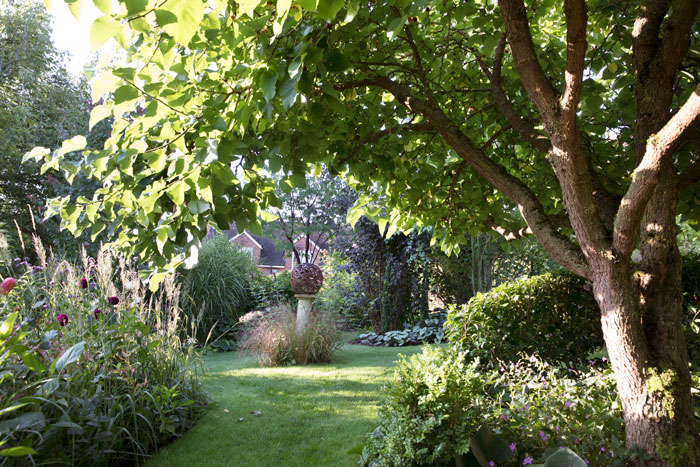Review: The Essential Tree Selection Guide
 Sandy Felton reviews this new and fascinating book to help us pick the right tree for the right place.
Sandy Felton reviews this new and fascinating book to help us pick the right tree for the right place.
Never has it been a more important time to plant trees. They play a vital role in the health of the natural world and us humans and they are essential life-giving plants that deliver a vast array of hidden benefits. With the advance of climate change, trees have become vital warriors for climate resilience and carbon storage.
‘The Essential Tree Selection Guide‘ – for climate resilience, carbon storage, species diversity and other ecosystem benefits – by Henrik Sjöman and Arit Anderson, couldn’t come at a more appropriate time. This excellent new publication offers a modern-day approach to tree selection in a well-researched book written by two authors whose horticultural expertise bring us a valuable and highly informative guide that takes us deep into the observation of trees in their natural habitats. Thus, the reader will find all the necessary information for planting the right tree in the right place as well as garnering a vast array of knowledge which in itself is fascinating.
It seems somewhat prophetic that as I write this review, there are many mourning the vandalism of the Sycamore Gap tree next to Hadrian’s Wall in Northumberland. We all need a better understanding of trees and their importance in our ecosystems as well as their ability to enrich our lives in the landscape.
 (above) Acer Palmatum, credit Henrik Sjöman
(above) Acer Palmatum, credit Henrik Sjöman
The book is divided into four parts with part one looking at the hidden benefits of trees and exploring ecosystem services. Part two asks us to think like a tree with ideas for selection and function. Part three is an impressive A-Z directory and in Part four you will find a tree selection table with key selection criteria at a glance.
The resources and references section is a wealth of information with key terms and considerations, where to buy trees and where to see trees and an extensive bibliography. The quick-reference Tree Selection Table provides the key attributes for each species at a glance and is easy to follow.
The guide is suitable for trees for the world’s temperate regions and as soon as you open the book the reader is immediately drawn into a clear explanation of ecosystem services (hidden benefits) and how trees deliver them. We learn how some trees excel at particular roles such as providing food for pollinators at times when it is scarce or filtering air pollution. Others have adapted to develop useful tolerances enabling them to cope with extreme conditions such as drought, low-nutrient soil and high winds. This fascinating and highly informative first part of the guide certainly gets the reader prepared for what comes after.
As Arit Anderson says in the Preface: “Our changing climate has put a new spotlight on the importance of trees, and as more people want to be part of the solution, it is crucial we understand the role and functionality of trees so they will be there for future generations.”
 (above) Prunus cerasifera ‘Nigra’ credit Henrik Sjöman
(above) Prunus cerasifera ‘Nigra’ credit Henrik Sjöman
At the heart of the book the A-Z Tree Directory is based on Henrik’s rigorous research and observation of trees in many different climates. There are more than 500 trees that have been chosen for their ecosystem benefits, resilience and a host of other criteria to ensure that they will continue contributing to our future gardens and landscapes.
Rightly so, given the depth of knowledge and careful research of this book, there have been many plaudits from the horticultural community. Anthony Antonelli, Professor of Biodiversity, Director of Science at the Royal Botanic Gardens, Kew, points out that the book is the ultimate guide for choosing the right tree for the right reasons, written by leading experts in an accessible and hands-on way, shows how the chances we make in our own gardens can contribute to local and global efforts to tackle climate change and biodiversity loss.
The book is illustrated throughout without over 300 photographs/illustrations including easy to follow diagrams and drawings.
I have to say that I am more than impressed by the wealth of knowledge that the authors include in this book. We find out how different trees give different types of shade, how they help mitigate flooding to some degree, the importance of succession in tree selection and how that affects our choice of tree, the contribution trees make to soil regeneration and how every garden and patch of green contributes essential benefits to the wider environment. It is a book you can delve into in different sections and come away with some new knowledge and understanding of the importance of the tree.
Henrik Sjöman is Scientific Curator at Gothenburg Botanical Garden and an Honorary Research Associate at the Royal Botanic Gardens, Kew. He specialises in how trees deliver ecosystem services in urban landscapes and the practical application of this in terms of diversifying the urban treescape.
Arit Anderson studied garden design at Capel Manor College and rose quickly to success at the RHS Chelsea 2013 Show, winning the Fresh Talent category followed by a Gold Medal at RHS Hampton Court in 2016 for her own show garden highlighting the needs for renewable energy. She is a presenter for BBC Gardeners’ World, hosts a popular podcast ‘Growing Greener’ and writes for national publications.
This is a large and heavy book published in association with Royal Botanic Gardens, Kew. It marks a significant addition to our knowledge of trees for climate resilience and species diversity and will be a valuable addition to the horticultural bookshelves of both professional and amateur gardeners and designers.
‘The Essential Tree Selection Guide’ – For climate resilience, carbon storage, species diversity and other ecosystem benefits – Published in hardback priced at £50 in association with the Royal Botanic Gardens, Kew, by Filbert Press.
Note: There’s an event with Henrik and Arit, hosted by Johanna Gibbons of J&L Gibbons, at the Garden Museum, on 7th November 2023 – please link here: both in person and livestream available.
We received a review copy of this book from the publisher, with thanks.


